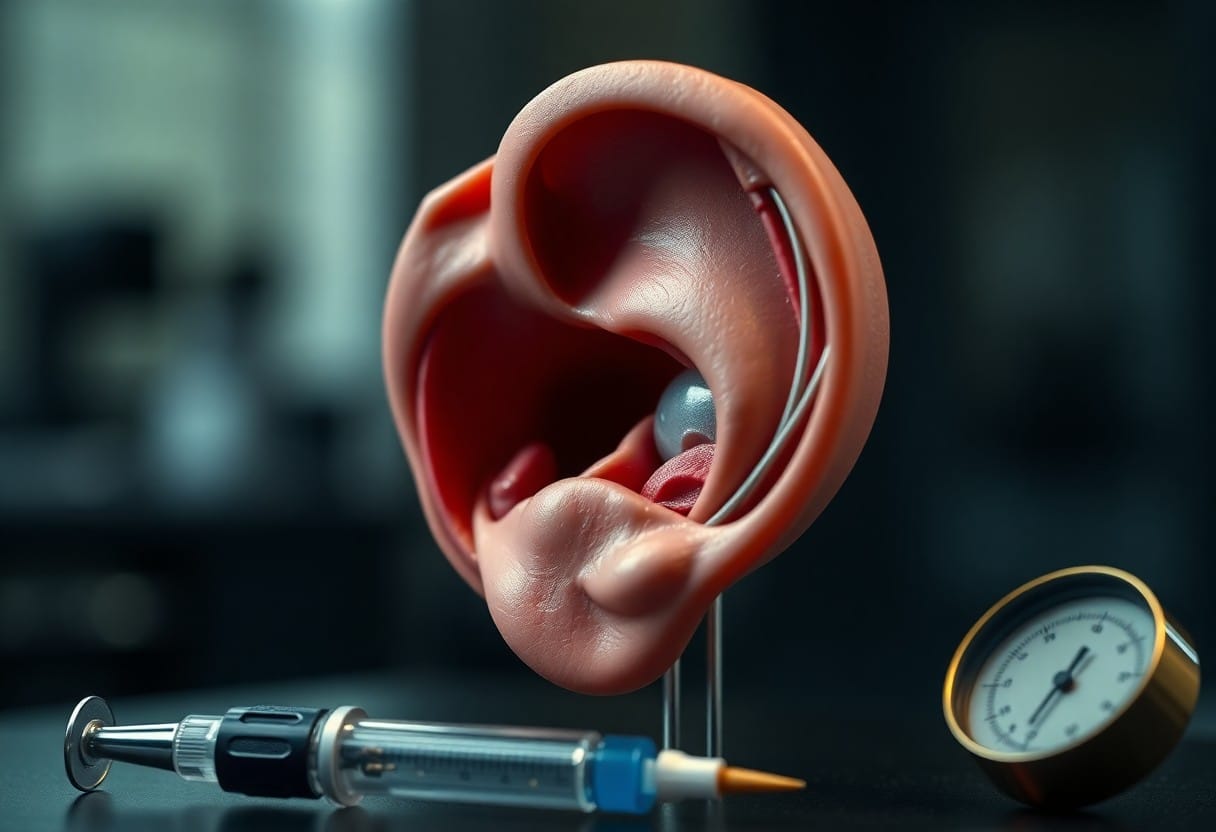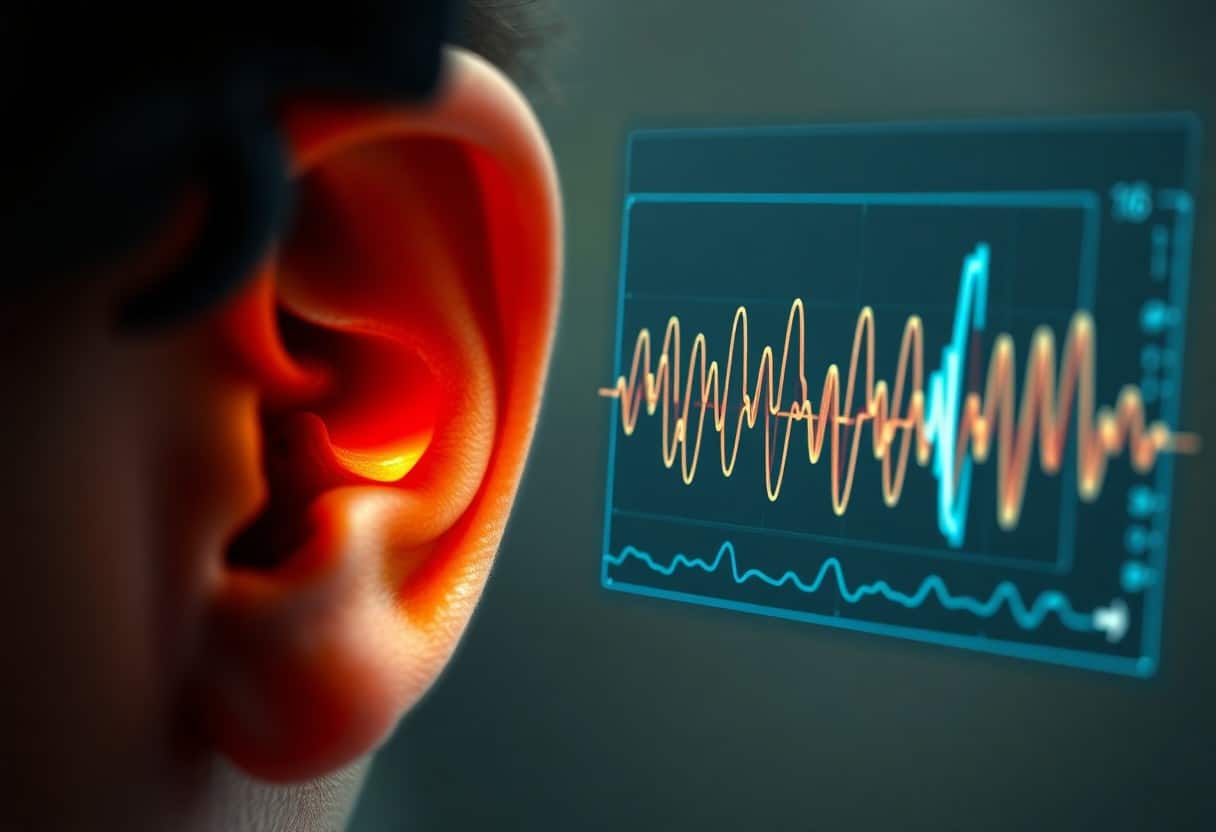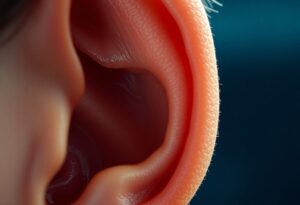With an understanding of how your ears function, you can better address the sensations of ear fullness, tinnitus, and earwax buildup. These conditions often arise from various factors such as pressure changes, sound exposure, or the accumulation of earwax, each rooted in distinct biological processes. Exploring the science behind these phenomena not only clarifies their causes but also equips you with knowledge to manage these common auditory concerns effectively.
Key Takeaways:
- Ear fullness can result from pressure changes, fluid accumulation, or eustachian tube dysfunction.
- Tinnitus is often linked to hearing loss, exposure to loud noises, or underlying health conditions, and can manifest as ringing or buzzing in the ears.
- Excess earwax can block sound transmission and cause discomfort, but it typically helps protect the ear from infections and debris.
The Neurological Connection: How the Brain Interprets Ear Signals
The Role of the Auditory Cortex
Your auditory cortex, located in the temporal lobe, plays a vital role in processing sound information. This area decodes the signals sent from your ears, allowing you to perceive nuances in sounds, such as pitch and volume. When issues like tinnitus arise, your auditory cortex may misinterpret these signals, contributing to the perception of ringing or buzzing noises that aren’t present in the environment.
Pathways of Sound Processing
Sound processing involves multiple pathways that transit auditory information from your ears to your brain. These routes connect your cochlea, auditory nerve, and various brain regions, ensuring sound waves are accurately interpreted. Disruptions in any part of this system can lead to altered auditory experiences, such as ear fullness or persistent tinnitus.
Auditory signals travel through the cochlear nuclei, superior olivary complex, and inferior colliculus before reaching the thalamus, and finally the auditory cortex. Each of these structures refines the sound information, enabling you to distinguish complex auditory environments. For instance, the superior olivary complex helps in localizing sound sources, while the inferior colliculus integrates auditory cues with physical responses. Any alteration in this intricate web can affect how you perceive sounds, leading to discomfort or confusion in unclear auditory situations, ultimately impacting your daily interactions and overall quality of life.

The Anatomy of Ear Fullness: What Happens When Pressure Builds
The Eustachian Tube: Gateway of Pressure Regulation
Your Eustachian tube serves as the primary passage for air to enter the middle ear, helping to regulate pressure. When the tube functions properly, it equalizes pressure between your throat and middle ear, which is necessary during activities like swallowing or yawning. Dysfunction can lead to discomfort, fullness, and temporary hearing loss, as pressure builds up and creates an imbalance.
The Impact of High Altitude and Underwater Conditions
High altitude and underwater environments can dramatically affect the pressure in your ears. Rapid changes in altitude can cause your ears to feel blocked or full as your body struggles to equalize the pressure. Similarly, when diving or ascending from underwater, the increase or decrease in pressure can lead to similar sensations, often requiring techniques like the Valsalva maneuver to alleviate discomfort.
At high altitudes, the reduced atmospheric pressure can lead to a feeling of fullness as your Eustachian tube works harder to equalize pressure discrepancies. Conversely, underwater, increased pressure can cause sensations of fullness and discomfort, known as barotrauma. Depending on depth, pressures can increase by one atmosphere for every 10 meters you descend, making it necessary to manage ear pressure actively to avoid injuries and maintain comfort during your activities.
Tinnitus Unveiled: The Phantom Sound Phenomenon
The Mechanisms of Sound Perception and Misperception
Your auditory system interprets sound through complex interactions between your ears and brain. Vibrations from sound waves travel through the outer ear, middle ear, and into the cochlea. Here, hair cells convert these vibrations into electrical signals sent to the brain. In the case of tinnitus, this process can misfire. Instead of external sounds, you may perceive phantom noises that aren’t present, often resulting from heightened sensitivity or damage to hair cells in the inner ear.
Common Misconceptions and Myths Surrounding Tinnitus
Another popular myth is that tinnitus is always a sign of hearing loss. While hearing loss is a common trigger, many individuals with normal hearing experience tinnitus as well. Additionally, people often assume that tinnitus only presents as ringing in the ears; however, it can manifest in various forms, including buzzing, hissing, or clicking sounds. Understanding these misconceptions helps contextualize your experience and encourages a more informed discussion with healthcare providers about effective management options.
Earwax: The Unsung Guardian of Ear Health
The Biochemical Composition and Functions of Earwax
Earwax, or cerumen, is primarily composed of fatty acids, alcohols, squalene, cholesterol, and various proteins. This unique mixture provides important barrier protection, trapping dust, debris, and microorganisms from entering your ear canal. The slightly acidic pH of earwax also helps inhibit bacterial and fungal growth, ensuring your ears remain clean and less prone to infections. Additionally, it moisturizes the sensitive skin of your ear canal, preventing dryness and irritation.
Common Issues with Earwax Buildup: Causes and Solutions
Earwax buildup can lead to discomfort, hearing loss, and tinnitus. Contributing factors include excessive earwax production, narrow ear canals, using cotton swabs, and external factors like skin conditions. Solutions often involve gentle ear irrigation or consultation with healthcare professionals for safe removal methods. Over-the-counter drops can also soften earwax for easier removal.
In many cases, individuals might be unaware of their earwax issues until symptoms arise. You might experience sensations of fullness or temporary hearing loss, which can indicate a blockage. Cotton swabs can push wax further into the canal, exacerbating the problem. Regular check-ups with an audiologist can help monitor earwax levels and prevent complications. Implementing preventive measures, such as using earwax softening drops periodically, can also mitigate the risk of excessive buildup and maintain ear health effectively.

The Interplay Between Ear Fullness, Tinnitus, and Earwax
How Earwax Impaction Can Lead to Tinnitus
Earwax impaction occurs when excessive wax blocks the ear canal, altering sound perception and causing pressure changes. This blockage can disrupt normal auditory processing, leading to the perception of ringing or buzzing sounds known as tinnitus. Studies indicate that approximately 30% of tinnitus cases may be associated with earwax buildup, highlighting the importance of maintaining clear ears for acoustic health.
Exploring the Cycle of Symptoms and Solutions
The relationship between ear fullness, tinnitus, and earwax can create a cycle that complicates treatment. An initial sensation of fullness may drive you to seek relief, which can unintentionally worsen the earwax buildup if improper cleaning methods are employed. Solutions like professional cleaning and careful home management can break this cycle, allowing you to alleviate symptoms more effectively.
Addressing ear health involves recognizing how self-care practices influence the presence and severity of symptoms. Using cotton swabs can push wax deeper, exacerbating ear fullness and tinnitus. Instead, opting for safe ear drops or seeking professional advice can help eliminate impaction and restore normal function. A comprehensive approach that includes regular check-ups can empower you to manage symptoms proactively, creating a pathway to lasting relief.
Practical Approaches to Managing Ear Health
At-Home Remedies for Maintenance and Relief
Simple at-home remedies can significantly aid in maintaining ear health and relieving discomfort. Regularly using a saline nasal spray can help keep your nasal passages clear, reducing pressure on the eustachian tubes. Warm compresses applied to the ear may ease discomfort and promote circulation. Over-the-counter pain relievers like ibuprofen can alleviate pain associated with ear fullness. Additionally, staying hydrated and practicing the Valsalva maneuver by gently blowing with your mouth closed helps equalize ear pressure.
When to Seek Professional Help
Consult a healthcare professional if symptoms persist beyond a few days or worsen despite home treatment. Persistent tinnitus, severe ear pain, sudden hearing loss, or fluid drainage warrant an immediate evaluation, as these can signal underlying conditions requiring prompt intervention. Your condition may benefit from specialized assessments, which can include audiometric testing or imaging studies.
Ignoring persistent symptoms can lead to complications, such as chronic ear infections or permanent hearing loss. For instance, a case study showed that early intervention in patients with sudden hearing loss significantly improved outcomes when they sought help within the first few days. Keeping track of your symptoms and communicating them effectively during your visit can enhance the diagnostic process and ensure proper treatment. Timely consultations can prevent further damage and improve your quality of life.
Future Perspectives on Ear Health Research
Innovations and Breakthroughs in Tinnitus Treatment
Recent advancements in tinnitus treatment have harnessed neural modulation techniques, resulting in promising new therapies aimed at recalibrating the auditory system. Techniques such as transcranial magnetic stimulation (TMS) and auditory stimulation therapy show potential in alleviating symptoms for numerous patients. Novel approaches that combine traditional sound therapy with cognitive behavioral strategies are also emerging, offering a multi-faceted experience that addresses both the physiological and psychological aspects of tinnitus.
The Role of Technology in Understanding Ear Disorders
The integration of technology into ear health research has revolutionized how ear disorders are understood and treated. Advanced imaging techniques, such as high-resolution MRI and CT scans, allow for detailed visualization of ear structures and pathology. Additionally, wearable devices that monitor auditory health are playing a role in collecting real-time data, providing insights into the prevalence and triggers of conditions like tinnitus and ear fullness. This data can lead to personalized treatment plans and more effective management strategies, enhancing overall patient outcomes.
Tools like apps for tracking symptoms and their correlation with daily activities increase your awareness of patterns that may exacerbate ear disorders. Machine learning algorithms are being utilized to analyze vast amounts of patient data, uncovering trends that were previously undetected. These technological advancements not only support clinical research but also empower you to be proactive in monitoring your ear health, potentially leading to earlier diagnosis and intervention.
To wrap up
So, understanding the science behind ear fullness, tinnitus, and earwax can enhance your awareness of these common auditory issues. You can recognize how changes in pressure and earwax buildup affect your hearing. Being informed helps you take proactive steps in managing symptoms, promoting ear health, and seeking timely medical advice when needed. By prioritizing your auditory wellbeing, you empower yourself to address and alleviate these conditions effectively.
FAQ
Q: What causes ear fullness?
A: Ear fullness is often caused by a change in pressure within the ear, commonly due to fluid buildup, allergies, sinus infections, or issues with the Eustachian tube that connects the middle ear to the throat.
Q: How is tinnitus related to ear fullness?
A: Tinnitus often accompanies ear fullness as both can stem from similar underlying issues such as pressure imbalances, hearing loss, or ear infections, leading to the perception of ringing or noise in the ears.
Q: What role does earwax play in hearing issues?
A: Earwax, or cerumen, helps protect the ear canal, but excessive buildup can lead to blockage, resulting in hearing difficulties, sensations of fullness, and may contribute to tinnitus.
Q: Are there treatments for ear fullness and tinnitus?
A: Treatments may include decongestants, nasal sprays, antihistamines, or procedures to remove earwax. In some cases, sound therapy or cognitive behavioral therapy is used for tinnitus management.
Q: When should I see a doctor for ear fullness or tinnitus?
A: You should consult a doctor if the symptoms persist for more than a few days, worsen, or are accompanied by severe pain, hearing loss, or dizziness, as these could indicate a more serious underlying condition.



